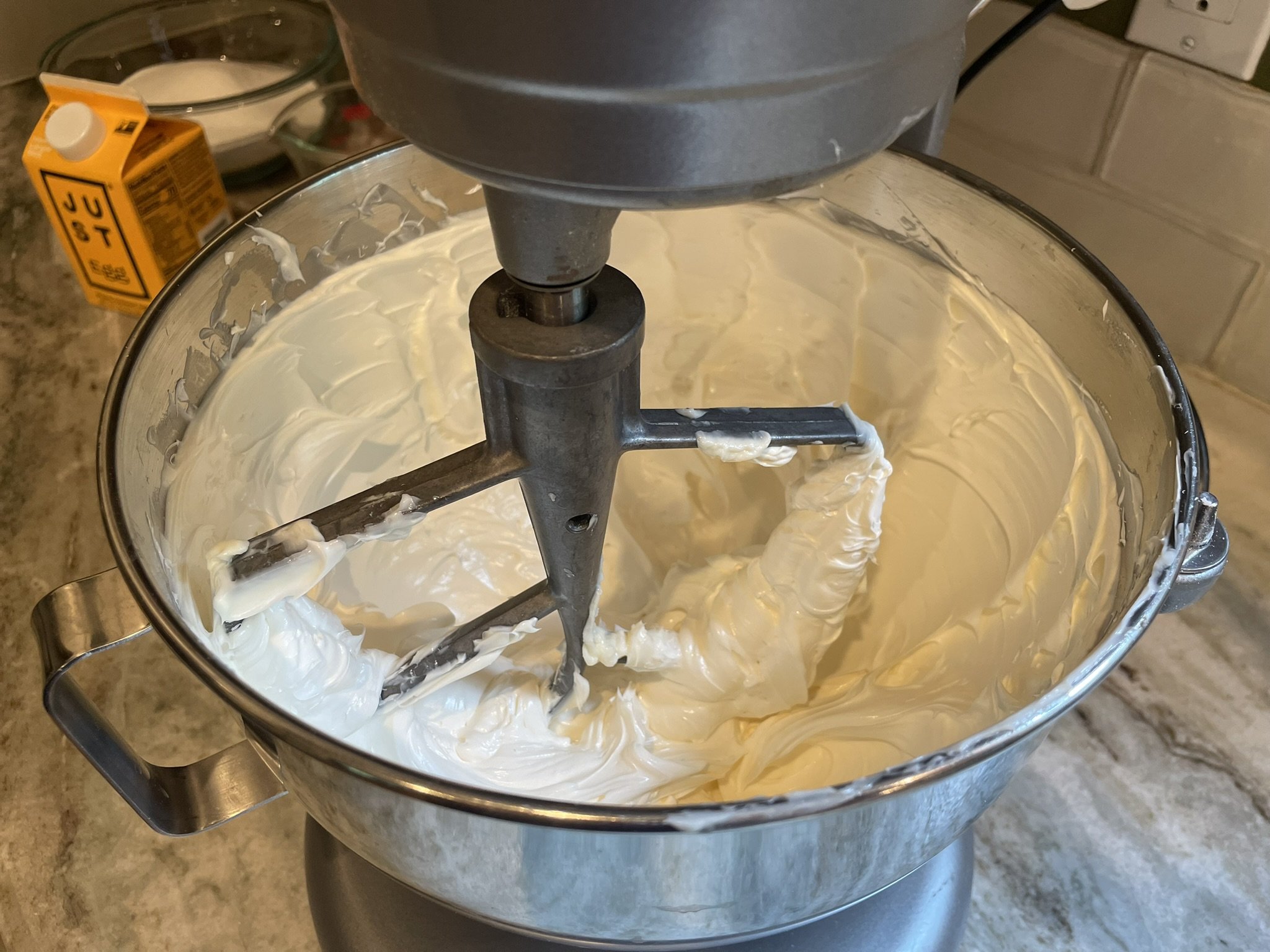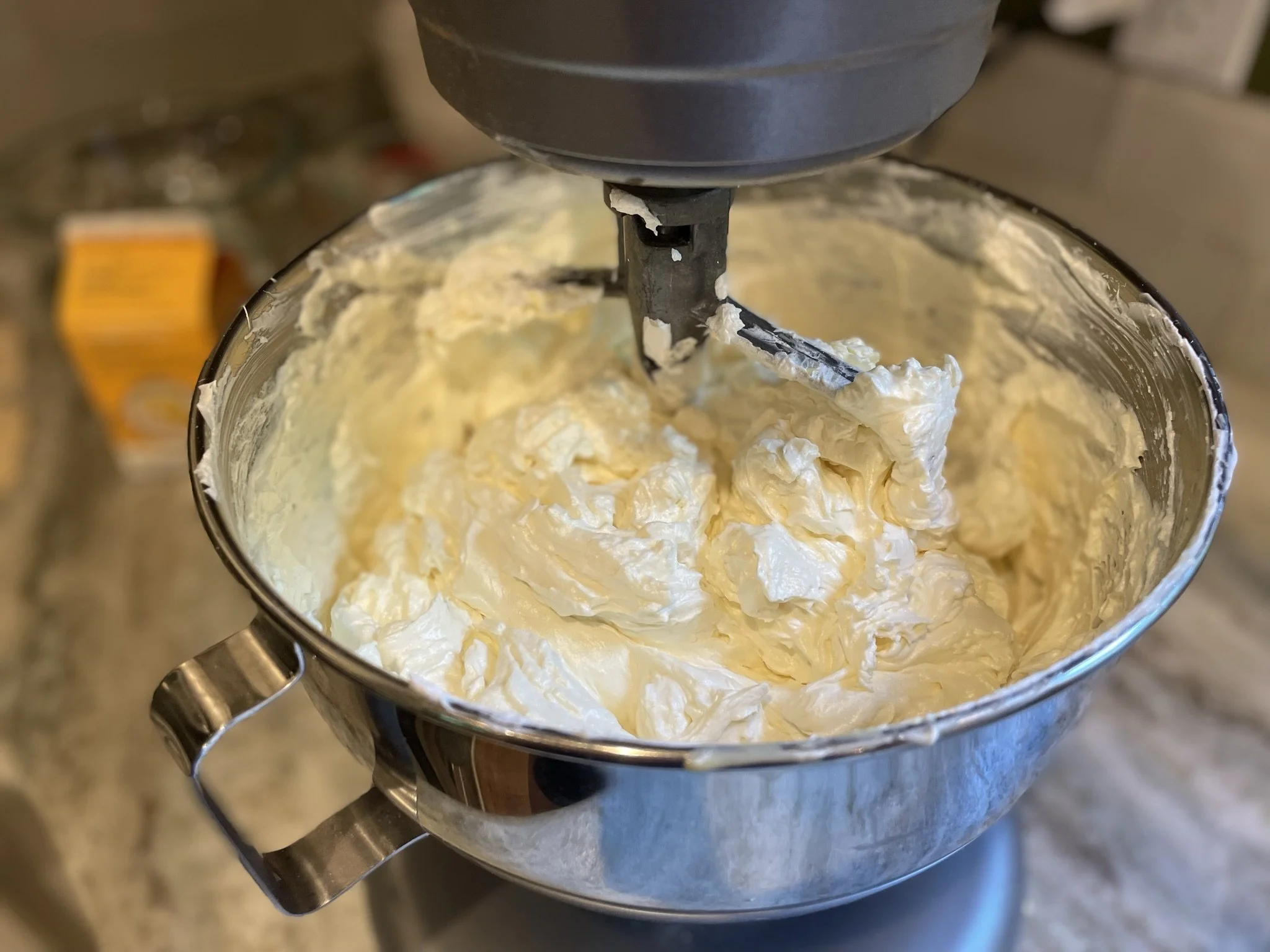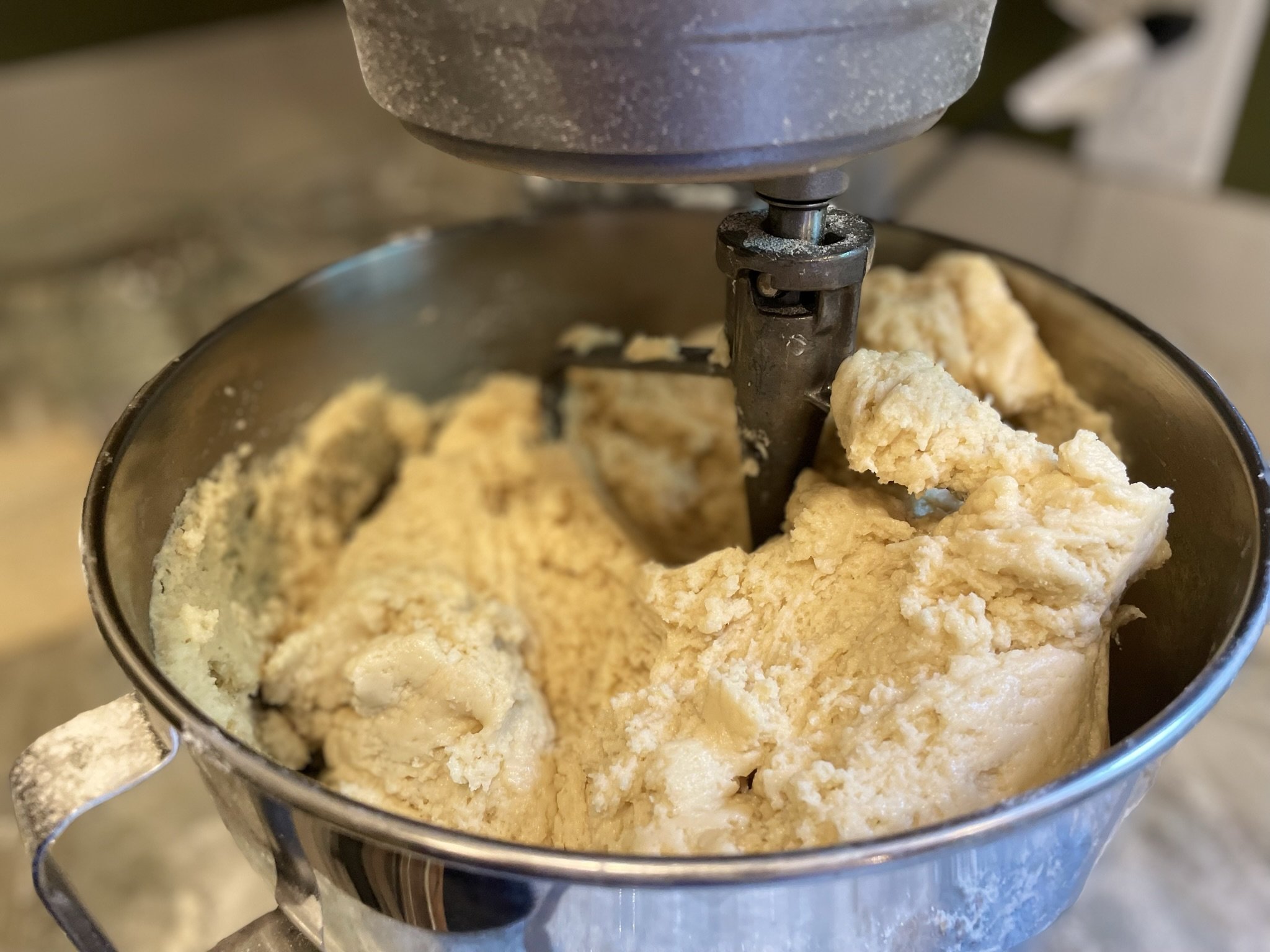Yaya’s Koulourakia
With a slight crunch on the outside but light and tender inside, these cookies are commonly served alongside a cup of Greek coffee for dunking or enjoy as is! With humble ingredients, this is my family’s classic and authentic recipe.
Although traditionally made for Easter, Koulourakia is plentiful throughout the year on my dining room buffet table! If I were to rate my top five cookies, well I would say ten because who could go wrong with a cookie? These would rank as my number one! Koulourakia is tasty (and addictive) while holding great significance in Greek culture.
Growing up, I remember sitting at my Yaya’s vintage dining room table rolling out rope-like pieces of dough; always trying to emulate the perfect craftsmanship of my Yaya, who effortlessly rolled and twisted the dough into perfect twists. The real kicker was I could never quite make the “ideal size.” Koulourakia is meant to be about two to three bites, and my Yaya’s seasoned hands rolled out consistent ‘ideal’ Koulourakia, whereas mine were about five bites. After years of trying to perfect the size, and now, where I use a scale, I am still greeted with the look that they still… “…need to be smaller,” as I am met with a kiss on the cheek.
Between you and I, I prefer to have the extra two bites anyway.
History and Significance
Origins
Koulourakia can be traced back to the Minoan civilization in Crete, where these cookies were shaped into a snake-like figure as snakes were believed to have healing powers. Although the exact history of Koulourakia is sparse, that is engrained in Greek culture and serves as a Greek household favorite around holidays and celebrations.
What are Koulourakia?
Pronounced “koo-lou-rah-kia,” Koulourakia is a traditional Easter butter-based cookie that has a slightly crunchy exterior yet a soft and tender inside; perfect for dunking in an afternoon cup of coffee. They are subtly sweet with a hint of vanilla and can be shaped in various designs, most commonly, a twist. My yaya always added a splash of cognac or brandy to the dough as well!
How to Make: Ingredients and Steps
Now, I always make these in remembrance of my late Yaya, Beverly. Looking back on the hours spent at the table rolling and twisting each koulourakia individually, I feel nostalgic reflecting on the stories she would share from growing up herself, and my family that I was not able to meet, in addition to sharing some details from my mother’s childhood that my mom most likely wouldn’t want me to know.
Once the first tray was filled, they were quickly brushed with eggwash and we patiently waited for them to finish baking. My Yaya made me the official quality checker before they were served on a platter to be enjoyed with a steaming cup of coffee.
Ingredients- Authentic recipe with vegan options
Butter: To enlist a soft, tender inside with a subtle exterior crunch
Vegan option: Plant-based butter with a 1:1 ratio. I have used both plant-based butter spread and stick form. I found that butter in stick form yields a better batter and overall outcome from the creaming process (i.e. the butter and sugar).
White Granular Sugar: I would not recommend a replacement.
Eggs: Aids in providing structure to the koulourakia.
Vegan option: Liquid egg substitute (i.e. JUST egg) works well as a substitute, however, the koulourakia were not quite as soft as they are when made with whole eggs.
Milk: Luke warm milk is key here to add moisture to the dough. I have also used plant-based milk (i.e. unsweetened almond milk) and have not noticed a difference in texture or flavor. However, this is the only milk I have tried so I cannot speak to others. I would not recommend coconut milk due to the flavor it would impose.
Vegan option: Plant-based milk (i.e. unsweetened almond milk) is the best substitute as I have not noticed a difference in texture or flavor. However, this is the only milk I have tried so I cannot speak to others. I would not recommend coconut milk or oat milk due to the flavor and texture it would impose.
All-Purpose Flour: The weather can significantly influence Greek baking and you may need slightly more (or less) flour depending on your specific climate. How much additional flour to add will be based on the dough and the texture. I recommend adding 1/4 of a cup at a time. The dough should JUST be able to roll into a rope without being sticky.
Baking Powder: Aids in helping the Koulourakia rise and slightly spread.
Vanilla: Admittedly, I altered the amount of vanilla in the recipe from what the original called for. I add extra vanilla to permeate throughout and elicit a more distinct flavor while maintaining balance.
Cognac, Brandy, or Whiskey (optional):
Steps -
1. In the bowl of your stand mixer, with the paddle attachment, cream the butter on medium speed for 15 minutes until light and fluffy. Scrape down the sides of the bowl as needed with a rubber spatula. Creaming the butter for 15 minutes is crucial to be light and tender koulourakia.
When using regular butter, creaming beyond 15 minutes is not necessary and will not make a big difference in the final baked product.
When using plant-based butter, I have found that creaming for 18 to 20 minutes (an additional 3 to 5 minutes) will yield a lighter, tender final baked koulourakia due to the ingredient profile difference.
2. Add the sugar to the creamed butter in the bowl of the stand mixer. Beat on medium speed for another 10 minutes. Following the 10 minutes, add the eggs one at a time beating on low speed. If using the liquid egg substitute, add a third of the mixture at a time.
The goal here is to incorporate the butter and sugar. Once you have hit the 10-minute mark, the mixture will be fluffy and if you put some on your finger, you should only faintly(if any) feel sugar granules. After this quality check, you add the eggs.
I know this can be time-consuming, but trust me, these extra minutes do make a significant difference in the baked koulourakia.
3. Next, take 1 cup of the sifted flour and gently whisk in baking powder, adding to the mixer and beating on low speed. Slowly add all the flour until the dough just comes together to roll into and hold a shape. At this point, add your lukewarm milk, vanilla extract, and optional whiskey and beat to combine. You will most likely need to add an additional cup of flour.
4. Cover with a clean dish towel/cloth and set aside at room temperature to allow the dough to rest for at least 30 minutes.
5. Preheat oven to 350 degrees Fahrenheit and line baking pans with parchment paper. Take a piece of dough, about the size of a foosball (~1/2” to 3/4” in diameter) and gently roll it into a 5” to 6” rope. Koulourakia can be shaped in many ways, however, my family has always enjoyed the twist and a bird shape known as “pouli.”
6. Once a baking sheet (or two) has been filled, gently brush an egg wash on top of each and bake between 24 and 30 minutes, turning the trays halfway for even baking. Continue until all the dough is rolled.
You can store this dough for up to one week; covered with a clean dry towel and covered tight with plastic wrap in the refrigerator. When you wish to bake more, allow the dough to come to room temperature before rolling and baking.
7. Immediately place onto a cooling rack to cool. Enjoy!

Authentic Koulourakia (With Vegan option)
Ingredients
- 1 lb / 4 sticks Salted Butter
- 3 cups (600g) Granular White Sugar
- 10 cups (1,200g) All-purpose flour *see notes below*
- 1/2 cup (120mL) Milk (Light cream, Whole milk, or Almond milk) - lukewarm
- 8 Eggs (Whole eggs or Liquid Egg Substitute)
- 1 tbsp Vanilla
- 2 tbsp Whiskey or Brandy (Optional)
Instructions
- In the bowl of your stand mixer, with the paddle attachment, cream the butter on medium speed for 15 minutes until light and fluffy. Scrape down the sides of the bowl as needed with a rubber spatula. Creaming the butter for 15 minutes is crucial to be light and tender koulourakia.
- Add the sugar to the creamed butter in the bowl of the stand mixer. Beat on medium speed for another 10 minutes. Following the 10 minutes, add the eggs one at a time beating on low speed. If using the liquid egg substitute, add a third of the mixture at a time.
- Next, take 1 cup of the sifted flour and gently whisk in baking powder, adding to the mixer beating on low speed. Slowly add all the flour until the dough just comes together to roll into and hold a shape. At this point, add your lukewarm milk, vanilla extract, and optional whiskey and beat to combine. You will most likely need to add an additional cup of flour.
- Cover with a clean dish towel/cloth and set aside at room temperature to allow the dough to rest for at least 30 minutes.
- Preheat oven to 350 degrees Fahrenheit and line baking pans with parchment paper. Take a piece of dough, about the size of a foosball (~1/2” to 3/4” in diameter) and gently roll it into a 5” to 6” rope. Koulourakia can be shaped in many ways, however, my family has always enjoyed the twist and a bird shape known as “pouli.”
- Once a baking sheet (or two) has been filled, gently brush an egg wash on top of each and bake between 24 and 30 minutes, turning the trays halfway for even baking. Continue until all the dough is rolled.
- Immediately place onto a cooling rack to cool. Enjoy!
Notes
See the blog post above regarding ingredients, substitutions, and recipe hacks.
The nutritional content provided is just an estimate. Nutritional content may vary based on substitutions and additions you may have made or by brand.








